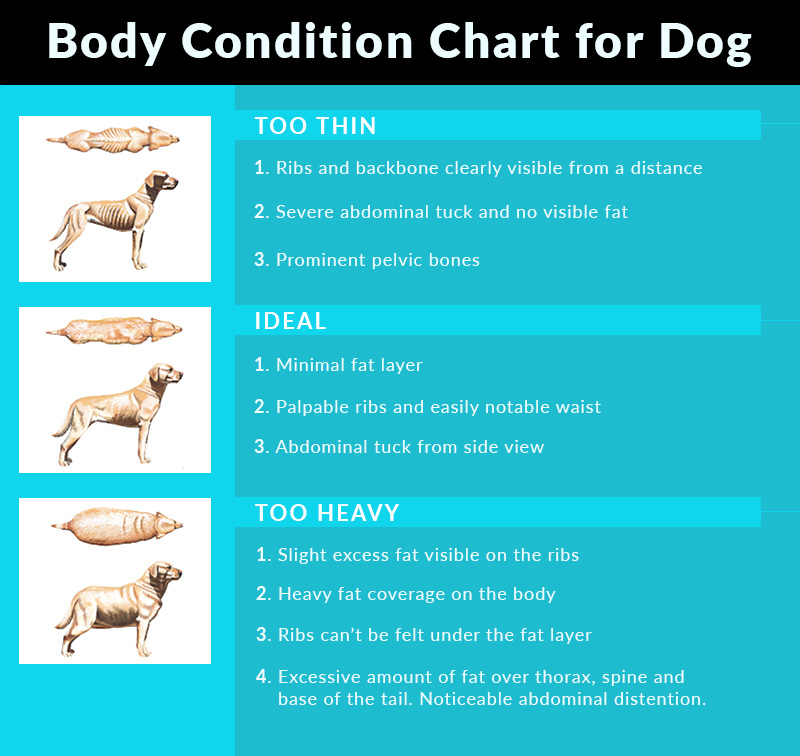Obesity in Dogs and Cats and How to Handle It

Whether it’s a dog or a cat, pets are known for bringing an abundance of joy into the life of humans. A pet’s love and affection are unconditional as they will be there for you in every situation without any expectations. Dogs make our lives whole and it’s our responsibility to reciprocate the same. Dogs absolutely love treats and being a pet parent, you want to keep your buddy happy. However, have you ever wondered what effect these little treats have on your furry companion? Whether he is at an ideal weight or has gained a couple of pounds due to these threats?
Well, fret not! In this blog, I have answered all the questions regarding obesity and weight management of pets. According to a study, more than half of the cat population is overweight, and dogs come close. Thus, it is crucial to maintain your pet’s body weight to keep them healthy and active. Now, let’s look at how obesity affects dogs and cats.
Obesity in Dogs
Obesity in dogs not only hampers their mobility but it also deteriorates their health. In the past, the body fat was considered to be innocuous and just an inactive tissue which takes up extra space. However, now the research has revealed that the fat tissue secretes hormones that cause inflammation in the body. In the long run, obesity can also lead to many health-related conditions in dogs and shorten their lifespan.

Obesity in Cats
Unhealthy eating habits often lead to obesity in cats. Generally, obesity is observed in middle-aged cats, between the age of 5 and 10. Besides, domestic and neutered cats are more prone to obesity due to lack of movement and higher food intake. Obesity affects various areas of the body such as bones and joints, digestive organs and respiratory organs. Obesity in cats can also lead to grave diseases and health risks.
Now you must have gotten an idea of what exactly is pet obesity. However, do you know whether your pet is at an ideal body weight or is overweight? Well, to make it easier for you, below I have provided a chart that classifies dogs and cats according to their weight and appearance to determine at what stage of obesity they are.

I hope that this chart was helpful to you in classifying the body condition of your furry companion. There’s no point of concern if your dog or cat is an ideal weight. However, if your pet is overweight or too thin or too overweight, you need to take the required measures to help him get back into shape. Below I have compiled a list of things pet parents need to do in order to help their pets reach the ideal weight.
Dogs and Cats That Are Underweight
- When a pet is underweight, it is ostensible that he lacks nutrition. Moreover, it also reflects on their skin and coat quality and energy level.
- First off, you need to evaluate whether this condition is medical or non-medical.
- Once you are certain that there is no medical condition involved, you may proceed further.
- Underweight dogs generally require additional nutrients and vitamins to get back on track.
- However, ensure you only provide the required amount of food to your pet. And that should also contain a balanced amount of fat as you don’t want your furry pal to become obese.
- Try switching to smaller meals for your pet throughout the day. This way, he can easily gain weight without overeating.
Dogs and Cats That Are At Ideal Weight
- Congratulations if your buddy is at an ideal weight! In this case, you don’t need to put much effort into maintaining the weight.
- Just follow your current routine and you’ll be good to go!
- Besides, see that your furry pal is getting the required amount of nutrition from his diet. And encourage daily exercise to keep him fit.
Dogs and Cats That Are Overweight or Obese
- Improving and managing the lifestyle of overweight or obese pets is most difficult and requires great efforts.
- An overweight/obese pet will certainly be less active and lethargic during the day. As a pet parent, you need to be vigilant and initiate a workout routine.
- These small steps will take your pet closer to his goal.
- The next thing you need to work on is preparing a diet chart for your pet. You need to cut down on the treats and stop over feeding the pet.
- The best way to help the pet lose weight is to provide food that has lower calorie density and is high in nutritional values.
- Moreover, switch the treats with bite-sized fruits and veggies that your furry pal can munch on.
It must be clear to you how important managing a pet’s weight is. Obesity in pets can lead to various grievous diseases such as heart conditions, diabetes, and arthritis due to strain on the joints. Along with the above points, you can also give a Joint Guard supplement to your pet if you want to prevent joint conditions.
I hope this blog was helpful to you and your pet. If your pet needs any modification in his lifestyle, do it as soon as you can to give him a happy and extended life.

David joined CanadaVetCare in 2013 as a product analyst and veterinary assistant. Being a passionate pet lover and keen animal health researcher, David had always found ways and solutions to help pet parents to improve their pets’ health. He is always happy to answer pet health-related queries and recommending pet parents for the right pet product for their furry companions.

